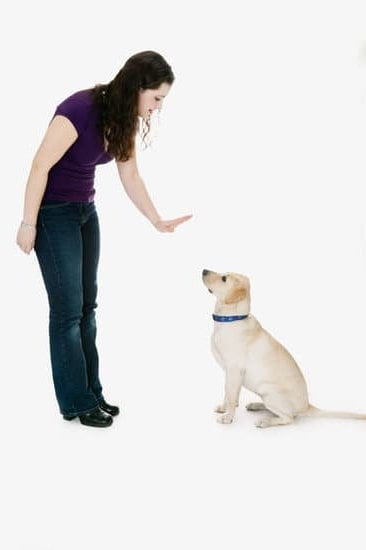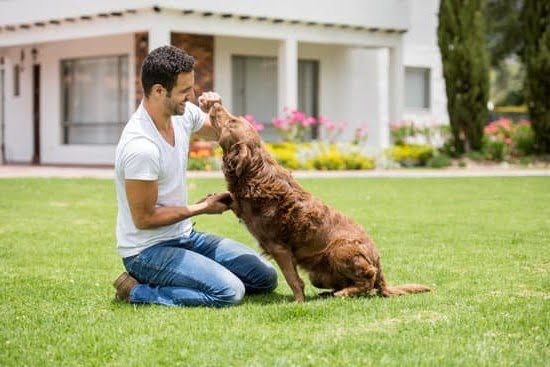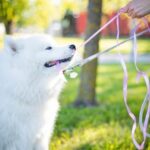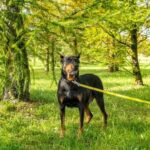Are you wondering how to train a staffy not to attack other dogs? Staffies, or Staffordshire Bull Terriers, are known for their strength and loyalty, but they can also display aggression towards other dogs if not properly trained. In this article, we will explore effective training methods to address and correct this behavior.
Understanding Staffy behavior is crucial in preventing aggressive tendencies towards other dogs. Identifying the root cause of their aggression is the first step in training a Staffy not to attack other dogs. By understanding their triggers and underlying reasons for aggressive behavior, we can work towards modifying their behavior effectively.
Positive reinforcement training is a key approach in encouraging non-aggressive behavior in Staffies. Using treats and praise, we can reinforce positive interactions with other dogs, ultimately discouraging aggressive behavior. Additionally, socialization techniques play an important role in introducing the Staffy to other dogs in a safe and controlled environment. Through obedience training and behavioral modification, we can further improve control and address any aggressive tendencies in our beloved pets.
Positive Reinforcement Training
Here are some key points to consider when using positive reinforcement training to discourage aggressive behavior in staffies:
- Consistency is key: Establish a consistent routine of rewarding your staffy for displaying non-aggressive behavior towards other dogs.
- Identify triggers: Pay attention to what triggers your staffy’s aggressive behavior towards other dogs, and work on desensitizing them through positive reinforcement.
- Praise and treats: Use verbal praise and high-value treats as rewards for your staffy when they exhibit non-aggressive behavior around other dogs.
By incorporating these techniques into your training regimen, you can effectively teach your staffy not to attack other dogs using positive reinforcement.
Additionally, it’s important for owners to understand that patience and consistency are crucial when implementing positive reinforcement training. It may take time for a staffy to unlearn aggressive tendencies and replace them with non-aggressive behaviors. However, with dedication and the right approach, positive reinforcement training can be highly successful in teaching a staffy not to attack other dogs.
Socialization Techniques
Socializing a Staffy with other dogs is an essential part of training them not to attack. Proper socialization can help the Staffy learn appropriate behavior and reduce aggressive tendencies. When introducing a Staffy to other dogs, it’s crucial to do so in a controlled and safe environment to ensure the safety of all animals involved.
Gradual Introduction
One effective technique for socializing a Staffy with other dogs is to start with gradual introductions. This can be done by arranging playdates with calm and non-aggressive dogs in a neutral territory, such as a local park or dog-friendly area. It’s important to closely monitor the interactions and intervene if any signs of aggression arise.
Positive Reinforcement
During the socialization process, using positive reinforcement techniques is key. When the Staffy displays friendly and non-aggressive behavior towards other dogs, reward them with treats and praise. This will help them associate positive experiences with interacting with other dogs, ultimately reducing their inclination to attack.
Professional Assistance
In some cases, socializing a Staffy with other dogs may require professional assistance. A certified dog trainer or behaviorist can provide guidance on safely introducing the Staffy to other dogs and address any underlying issues that may be contributing to their aggression. Seeking professional help is especially important if the Staffy has shown severe aggression towards other dogs in the past.
By utilizing these socialization techniques, pet owners can work towards training their Staffy not to attack other dogs. Consistency, patience, and responsible ownership are key factors in successfully socializing a Staffy and encouraging non-aggressive behavior towards other animals.
Obedience Training
When it comes to training a Staffy not to attack other dogs, obedience training plays a crucial role in improving their behavior and overall control. By teaching your Staffy basic commands, you can effectively manage their interactions with other dogs and prevent aggressive behavior. Here are some essential obedience training tips for shaping your Staffy’s behavior around other dogs:
- Start with basic commands: Begin by teaching your Staffy fundamental commands such as “sit,” “stay,” “come,” and “leave it.” These commands will provide you with better control over your dog’s actions in the presence of other dogs.
- Consistency is key: Practice these commands consistently in various environments, including when other dogs are present. This will help your Staffy understand that these commands apply regardless of the situation.
- Use positive reinforcement: When your Staffy follows a command around other dogs, reward them with treats and praise. Positive reinforcement will encourage non-aggressive behavior and create a positive association with obeying commands.
Additionally, incorporating obedience training into your daily routine can help strengthen the bond between you and your Staffy, making it easier to manage their behavior around other dogs.
Incorporating obedience training into your efforts can significantly contribute to shaping your Staffy’s behavior around other dogs. Consistent practice of basic commands, positive reinforcement, and patience are key elements in modifying aggressive tendencies and improving control over your dog’s behavior in the presence of other dogs.
Behavioral Modification
Identifying Aggressive Tendencies
When dealing with a staffy that displays aggression towards other dogs, it’s crucial to understand the root cause of this behavior. It could be due to fear, territorial instincts, or lack of socialization. Identifying the specific triggers and situations that lead to aggressive behavior is the first step in addressing and correcting it.
Professional Training Methods
Professional dog trainers have the expertise and experience to address aggressive tendencies in staffies. They can use techniques such as desensitization and counter-conditioning to change your dog’s response to other dogs from negative to positive. This involves gradually exposing the staffy to other dogs in a controlled environment while providing positive reinforcement for calm and non-aggressive behavior.
Consistent Training
Consistency is key when utilizing professional training methods to modify a staffy’s aggressive tendencies. This means implementing the techniques taught by the trainer on a daily basis and reinforcing positive behavior at all times. It’s important for owners to be committed to the process and follow through with the training plan provided by the professional.
Seeking professional help is often necessary when dealing with a staffy that exhibits aggression towards other dogs. A qualified trainer can provide personalized training methods tailored to your dog’s specific needs, ultimately leading to a safer and more harmonious interaction with other dogs. With dedication, patience, and expert guidance, it is possible to train a staffy not to attack other dogs.
Exercise and Mental Stimulation
Staffordshire Bull Terriers, or Staffies, are known for their strong and sometimes aggressive behavior towards other dogs. It is essential to understand the root cause of this aggression in order to effectively train a Staffy not to attack other dogs. Aggression in dogs can stem from fear, anxiety, lack of socialization, or even medical issues. By identifying the underlying cause of the Staffy’s behavior, owners can tailor their training approach to address and correct the aggression.
Positive reinforcement training is a highly effective method for teaching a Staffy non-aggressive behavior towards other dogs. Using treats and praise to reward calm and non-threatening interactions with other dogs can help reinforce positive behaviors. Consistency is key when implementing positive reinforcement training, as it may take time for the desired behavior to become ingrained in the dog’s actions.
In addition to training techniques, providing ample exercise and mental stimulation for a Staffy is crucial in reducing aggressive behavior towards other dogs. A tired and mentally fulfilled dog is less likely to exhibit aggression. Engaging in regular physical activities such as walks, runs, and interactive play sessions can help release excess energy and reduce stress or frustration that could lead to aggressive tendencies.
| Training Method | Effectiveness |
|---|---|
| Positive Reinforcement | Highly Effective |
| Socialization Techniques | Important for Behavior Modification |
| Consistent Exercise and Mental Stimulation | Crucial for Reducing Aggressive Behavior |
Responsible Ownership
Owning a Staffy or any large, powerful breed comes with great responsibility. Consistent training is crucial in preventing dog attacks, particularly when it comes to addressing aggression towards other dogs. It’s important to understand that aggressive behavior in dogs, including Staffies, can often be a result of fear, anxiety, or a lack of socialization. This is why responsible ownership and consistent training are essential in preventing potential dog attacks.
One vital aspect of responsible ownership is recognizing the signs of aggression in your Staffy and taking proactive measures to address them. Aggression towards other dogs can be triggered by various factors such as fear, territorial instincts, or previous negative experiences. By understanding the root cause of the aggression, you can devise an effective training plan to modify your Staffy’s behavior.
Consistency is key when it comes to training a Staffy not to attack other dogs. This involves implementing positive reinforcement techniques such as treats and praise to encourage non-aggressive behavior consistently. Additionally, regular obedience training is essential for improving control and behavior around other dogs. It’s also important to provide your Staffy with ample physical and mental stimulation through regular exercise and interactive play to reduce aggressive tendencies.
| Aspect | Importance |
|---|---|
| Recognizing signs of aggression | Crucial for addressing root cause |
| Consistency in training | Key for reinforcing non-aggressive behavior |
| Obedience training and stimulation | Essential for improving control and reducing aggressive tendencies |
Seeking Professional Help
In conclusion, training a Staffy not to attack other dogs requires patience, consistency, and a deep understanding of the breed’s behavior. It is essential to identify the root cause of the aggression and address it through positive reinforcement training, socialization techniques, obedience training, behavioral modification, exercise, and mental stimulation. Responsible ownership also plays a crucial role in preventing dog attacks by ensuring consistent training and providing a safe environment for the Staffy.
However, there are instances when seeking professional help becomes necessary. If despite all efforts, the Staffy continues to show signs of aggression towards other dogs, it may be time to consider professional assistance. A professional dog trainer or behaviorist can assess the situation objectively and offer tailored training methods to address and correct aggressive tendencies in Staffies. They can also provide guidance on how to train a staffy not to attack other dogs based on their individual needs and temperament.
Frequently Asked Questions
How Can I Stop My Dog From Attacking Other Dogs?
To prevent your dog from attacking other dogs, it’s crucial to focus on proper training and socialization. Obedience training can help improve control and prevent aggressive behavior. Additionally, gradual exposure to other dogs in controlled environments can help desensitize your dog to their presence.
How Do I Make My Staffy Less Aggressive?
Making a Staffy less aggressive involves a combination of proper training, socialization, and positive reinforcement. Consistent obedience training, providing mental stimulation, and rewarding good behavior can help redirect the dog’s aggression into more acceptable behaviors. It’s essential to address any underlying factors contributing to the aggression, such as fear or anxiety.
Are Staffies OK With Other Dogs?
Whether or not Staffies are okay with other dogs depends on the individual dog and its socialization, training, and temperament. With proper socialization from an early age and ongoing exposure to other dogs throughout their lives, many Staffies can coexist peacefully with other dogs.
However, it’s important for owners to remain vigilant and be mindful of their dog’s behavior around other animals.

Welcome to the blog! I am a professional dog trainer and have been working with dogs for many years. In this blog, I will be discussing various topics related to dog training, including tips, tricks, and advice. I hope you find this information helpful and informative. Thanks for reading!





